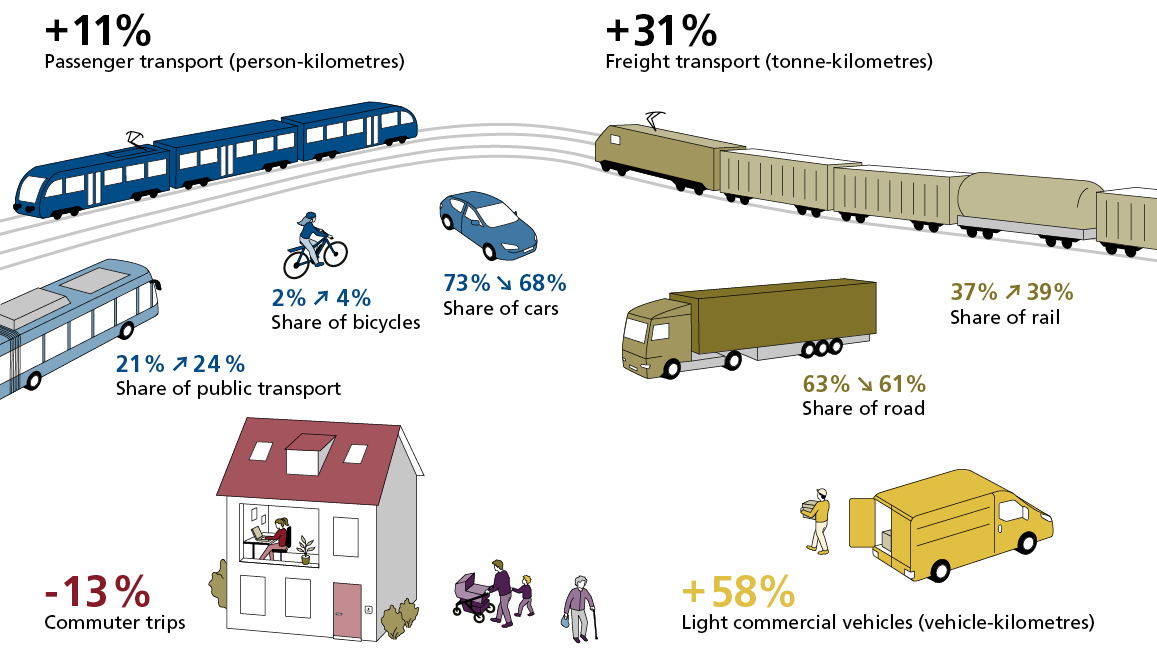Transport use will continue to grow in the future. However, it will grow more slowly than the population due to social and economic trends such as the increase in working from home, continuing urbanisation and population ageing. These are the findings described in the Transport Outlook 2050, a report by the Federal Department of the Environment, Transport, Energy and Communications (DETEC).
Findings at a glance
The diagram summarises the main findings of Transport Outlook 2050. Important drivers for the increase in transport use are both population and economic growth. The population grows by 21 per cent and GDP by 59 per cent. Compared to the population, passenger transport increases at a disproportionately low rate of just 11 per cent. Freight traffic rises by 31 per cent, with a particularly strong increase in van deliveries. People commute less but make more trips in their leisure time.

A basis for transport and spatial planning at the Confederation
The results of Transport Outlook 2050 are used by planners working in the fields of mobility, spatial planning and the environment, for example to compile road infrastructure programmes or timetables. The results are also used as a basis for transport policy and spatial planning decisions, such as those set out in the Mobility and space 2050 - sectoral plan for transport, program part. Furthermore, the DETEC offices use the results for their outlooks on energy use and estimates of noise and air pollutant emissions.
The Transport Outlook 2050 outlines four 'if-then' scenarios with a vision of how passenger and freight transport could develop. The Basis scenario shows how traffic could develop if the federal government's current mobility objectives are pursued. The other three scenarios are alternative development paths. All scenarios are based on different assumptions, such as when politicians will take measures to achieve the Paris climate targets; how quickly environmentally friendly technologies will become established; and how important ownership and sustainability are to individuals. In addition, two sensitivity analysis with higher and lower population and economic development were realized for the «Basis» scenario.
The Business-as-Usual (BAU) scenario envisages proceeding as now within the current regulative framework, with little change. The two scenarios Individualised Society (InS) and Sustainable Society (SuS) assume that transport is strongly impacted by technical innovations, such as the automation of passenger vehicles. However, technologies are used for different purposes ‒ either for individual comfort (Individualised Society) or for sustainability and resource conservation (Sustainable Society).
The Basis scenario is that used by the FOT and FEDRO to develop infrastructure and services, and is used by ARE to draw up its agglomeration programmes. It replaces the reference scenario of Transport Outlook 2040, which was published in 2016. The other scenarios serve to show the spectrum of possible developments in order to obtain robust planning results.
The Transport Outlook is updated when there are changes to key factors such as population and economic scenarios, or when updates are made to key data in the mobility sector, such as the Mobility and Transport Microcensus.
Documents
Transport Outlook 2050: Final Report (PDF, 32 MB, 08.04.2022)German, Summary in English

